Tiger Sight India: India’s Most Trusted Tiger Safari Experts

At Tiger Sight India; We are:
"A division of Excursion India Tours and Travels." We are experts at organizing tiger tours in India's most well-known national parks as well as lesser-known ones, helping to boost the local economy while taking great care to protect the native plants and animals from encroachment and damage.
With nearly 10 years of experience organizing tiger trips, this business is the most seasoned in India's wildlife tours and travel industry. Our knowledge of Indian animals and culture has been refined over time.
Delivering a life-changing trip. Creating unique tiger safari experiences by continuously inventing and selecting animal trips, engaging with the local population, and understanding their culture.
"WE SERVE, WE CONSERVE" is our motto, and it encompasses all of our stakeholders and biodiversity.
We are pleased to have signed the Glasgow Declaration on Climate Action in Tourism as a division of Excursion India Tours and Travels. In order to achieve Net Zero emissions by 2050, we are dedicated to delivering plans that are in line with the paths to cut tourism emissions in half over the next ten years.
A Good Cause
Further Reasons for Selecting Tiger Sight India
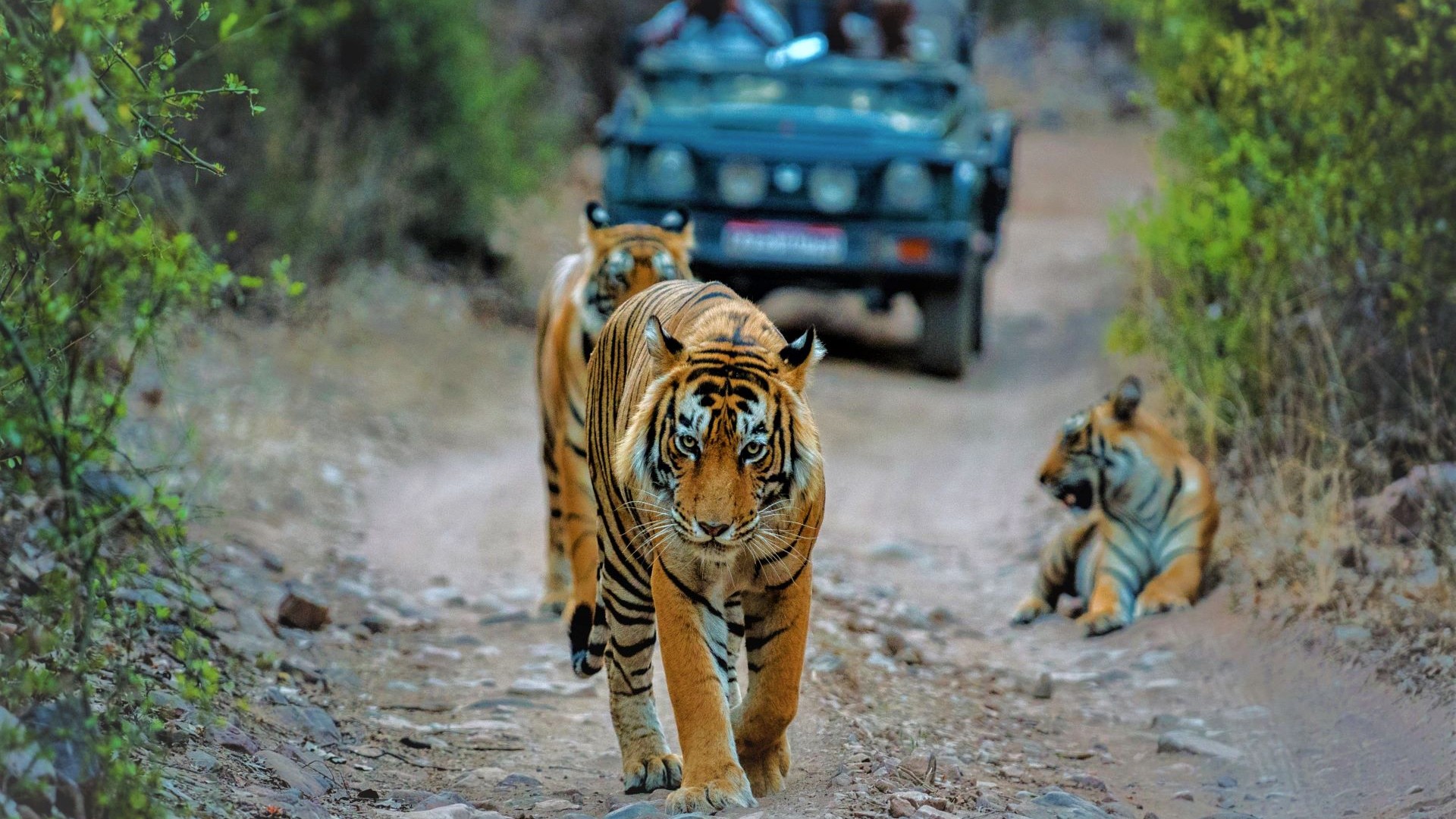
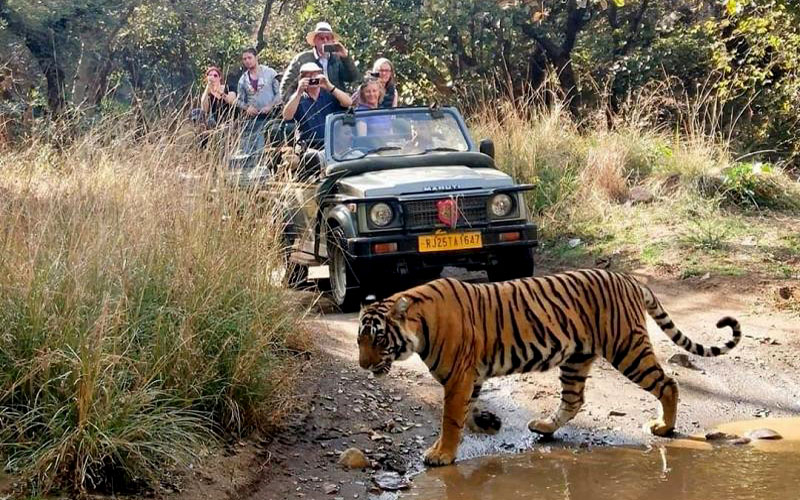
At Tiger Sight India, the wild comes to life and you can have life-changing experiences. As one of the most reliable wildlife tour companies in India, we have over ten years of experience and an undying love for tigers and wildlife.
Our specialty at Tiger Sight India is crafting remarkable wildlife encounters that are painstakingly designed to transport you to the captivating splendor of India's varied ecosystems. Our staff of qualified and seasoned naturalists is committed to making sure that every second of your wildlife adventure is exciting and full of learning.
We are quite proud of our carefully curated collection of excellent wildlife lodges and lodgings, which have been picked to offer you the highest level of comfort and a smooth transition into the natural world. From eco-friendly wilderness camping to opulent jungle resorts, we guarantee an enchanted and revitalizing experience.
Since we know that bringing you to the center of the wilderness is the first step in creating an amazing wildlife encounter, seamless transportation is a fundamental component of our service. You may enjoy the stunning scenery as you travel in safety and comfort thanks to our well-kept cars and knowledgeable drivers.
Thousands of visitors from all around the world have expressed their admiration and gratitude for Tiger Sight India. Because of our dedication to providing outstanding wildlife experiences, we are the go-to option for professionals, photographers, and wildlife enthusiasts looking for exhilarating interactions with India's famous Bengal Tigers and other animals.
We are well known for our proficiency in planning safaris in India that include tigers, leopards, snow leopards, Asiatic lions, red pandas, and sloth bears. Our well planned itineraries will transport you to the center of these amazing environments, whether your goal is to see the majestic tigers of Ranthambore, the elusive snow leopards of Ladakh, or the stately Asiatic lions of Gir.
Every journey should be a once-in-a-lifetime experience, according to Tiger Sight India. We guarantee that your interactions will be civil, moral, and unforgettable because to our in-depth knowledge of animal behavior and dedication to responsible tourism.
Experience the wonders of India's abundant biodiversity by going on a life-changing wildlife adventure with Tiger Sight India. Allow us to design a personalized schedule that will surpass your expectations and leave you with priceless memories that will last a lifetime.
What will you encounter with us?
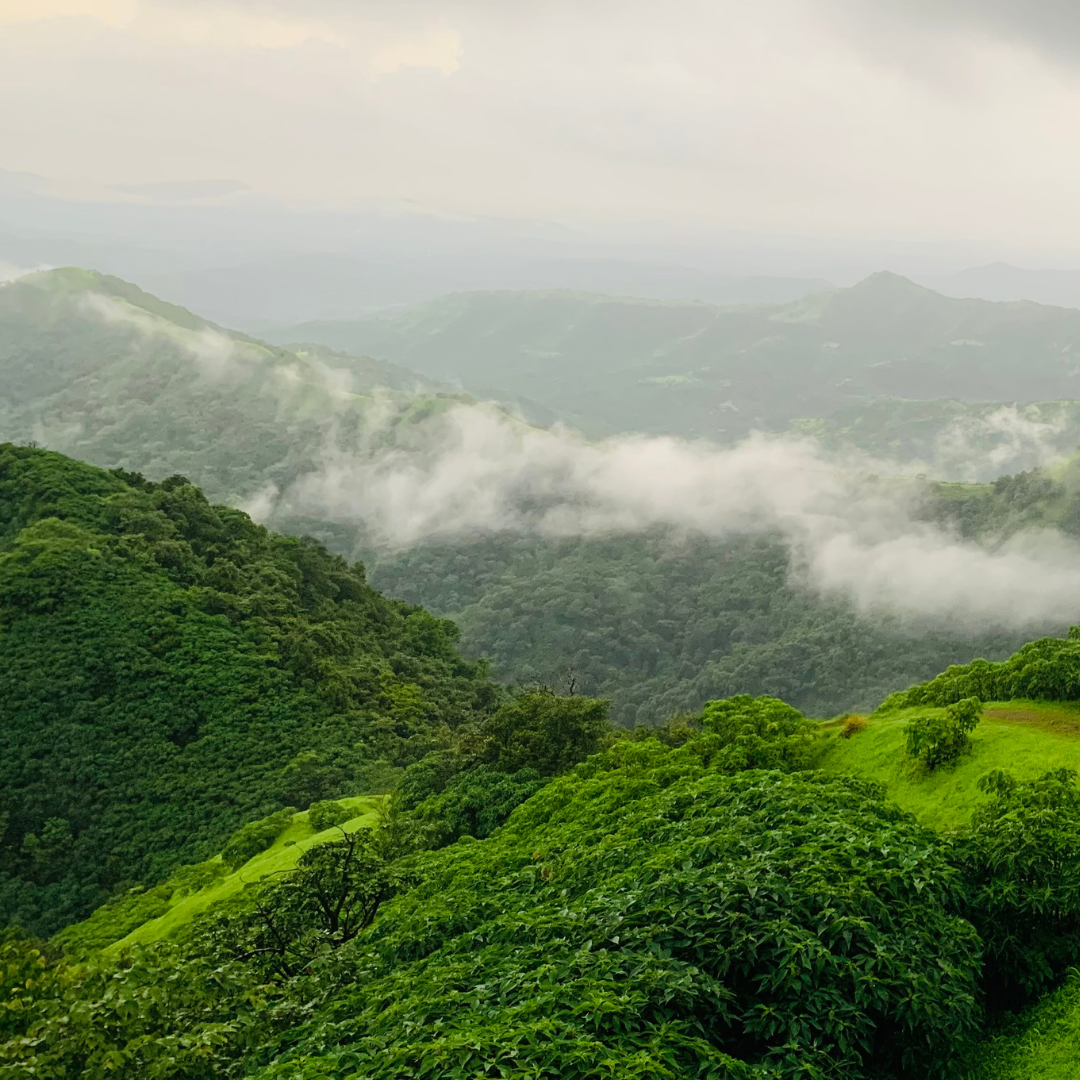

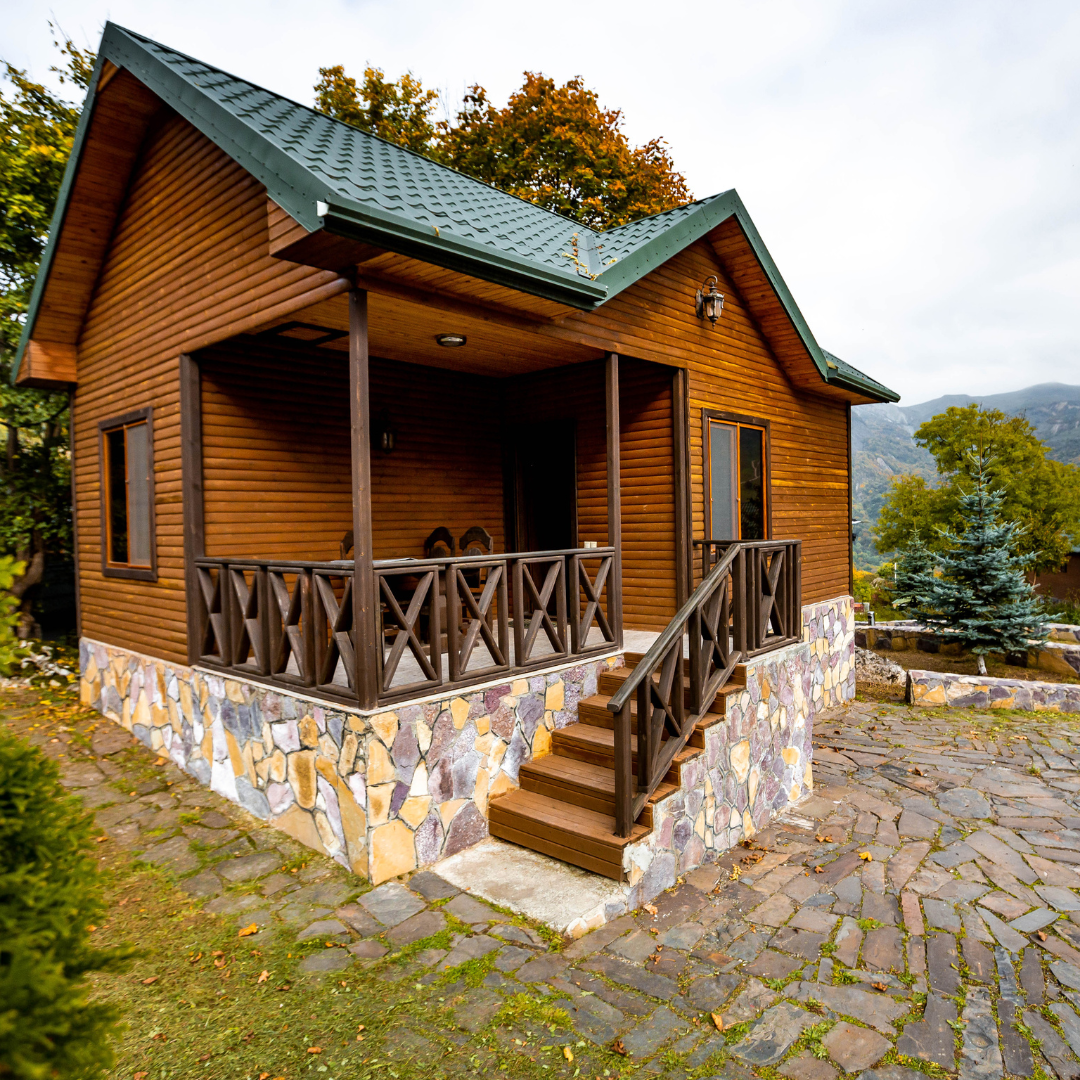

Top 5 Destinations for Tiger Safaris in India
India is home to 106 national parks. About 200 endangered species call this place home. Our ecosystem's canopy species is the Royal Bengal tiger. India's national parks provide a variety of landscapes. While Kanha National Park's evergreen sal forest flourishes in Central India, Ranthambore National Park's dry deciduous forest is located in the country's west. Being in the foothills of the Great Himalaya Range makes Corbett National Park special and a breathtaking location to photograph. India is a popular destination for wildlife and tiger safaris as well as nature lovers because it boasts some of the most biodiverse regions.
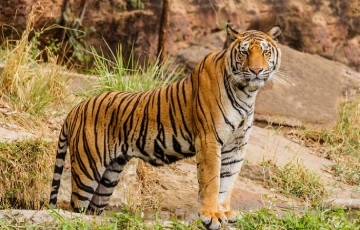

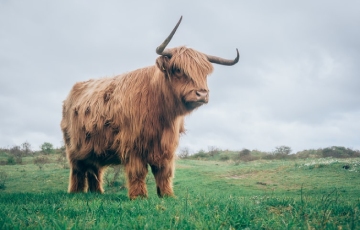


Top 5 Tips for Tiger Safari in India
QUESTIONS BEFORE GOING FOR A TIGER SAFARI IN INDIA
There are three round-pin plugs and a 230–240 volt power source. The majority of tourists from the West will need an adapter. All of our lodges offer adapters upon request. International plugs are available in the rooms of many of our properties. There are plenty of sockets for charging devices like cameras.
Every one of our lodges has access to a basic internet connection. When visitors come to our lodges, we encourage them to detach from the outside world and reconnect with nature. Although not the fastest, the internet connection is sufficient for correspondence and regular business. Due to our distant location and the time it takes to rectify malfunctions, internet reliability may not always be guaranteed.
All of the lodges serve a delicious assortment of both vegetarian and non-vegetarian dishes; breakfast is typically served on safari. Both Indian and continental cuisines are available for lunch and dinner. Special dietary needs, such as being a pure vegetarian, are accommodated with advance notice. The lodges serve fish, mutton, or chicken for all of their main meals. Most of the time, beef and pork are unavailable. Fresh non-vegetarian food that is safe to consume is what we obtain. If unique dietary needs are communicated to the team when making the Tiger Safari reservation, they can accommodate them.
We kindly ask that visitors not tip any individual lodge employees. There are tip receptacles in the
offices if you would want to express your gratitude by leaving a tip. The operational staff, junior staff, and
several behind-the-scenes personnel all share the tip that is gathered.
Note: Drivers, naturalists, and nature guides may get direct tips and are not included in the standard
tipping. There are no service fees at our lodges.
The rupee, which is worth 100 paise, is the currency of India. In India, major currencies including US dollars, British pounds, and euros are easily exchanged. There are money exchange counters at the majority of the nation's international airports, and money exchange agents are present in every city. With a day's notice, our wildlife lodges can exchange modest amounts of major currencies and huge sums. Although there are many of ATMs across the nation, they may regularly run out of money close to the parks. Master/Visa credit and debit cards are also accepted at all of our lodges.
FAQ’S FOR TIGER SAFARI IN INDIA
Due to park permits opening at that time, it is advised to book a Tiger Safari at least 130 days in advance. This will provide a chance to obtain Tiger Safari's recommended zones.
India alone is home to 80% of the world's tiger population. Experience India's many ecosystems, get up close and personal with conservation and adventure, and witness the magnificent Bengal tiger in the wild on a tiger safari.
For more information, please click the link: https://tigersightindia.com/cancellation-and-modification policy
Yes, a visa is necessary in order to enter India. Although there is the ability to obtain a visa on arrival for certain countries, it is advised to do so beforehand.
A pleasant stay that includes all meals and two private safaris would cost roughly USD 600–800 per day if two people traveled together, while the exact cost may vary depending on the travel dates. Because safaris can be shared, the cost will significantly decrease if four people are traveling together.
Due to park permits opening at that time, it is advised to book a Tiger Safari at least 130 days in advance. This will provide a chance to obtain Tiger Safari's recommended zones.
India alone is home to 80% of the world's tiger population. Experience India's many ecosystems, get up close and personal with conservation and adventure, and witness the magnificent Bengal tiger in the wild on a tiger safari.
For more information, please click the link: https://tigersightindia.com/cancellation-and-modification policy
Yes, a visa is necessary in order to enter India. Although there is the ability to obtain a visa on arrival for certain countries, it is advised to do so beforehand.
A pleasant stay that includes all meals and two private safaris would cost roughly USD 600–800 per day if two people traveled together, while the exact cost may vary depending on the travel dates. Because safaris can be shared, the cost will significantly decrease if four people are traveling together.
Safari Experience
An exciting and engaging experience, a typical day on an Indian tiger safari gives you the chance to explore the jungle, see wildlife in its natural habitat, and maybe even sight the elusive Bengal tiger. In order to participate in the morning safari, which ends at 11 AM, you must arrive at the park extremely early. After lunch, the afternoon safari begins at 2:30 PM and ends at dusk. Seasons tend to affect t imings.
Two safari drives every day, one in the morning and one in the afternoon, are included in a standard tiger safari package.
As long as you abide by the rules and regulations of the park, open jeeps are safe for tiger safaris in India. A safe and pleasurable experience is ensured by the well-trained drivers and guides.
Jeeps are chosen for greater views and a more individualized experience because they are smaller and can accommodate four to six people. With a capacity of 16–18 people, canters are larger, more affordable, and preferred for large gatherings.
Indeed, in certain buffer zones of Indian national parks, such as Bandhavgarh, Kanha, Satpura, Panna, and Pench, night safaris are available. It begins around dusk and offers the chance to witness nocturnal creatures that are rarely seen during the day, like owls, civets, porcupines, hyenas, jackals, leopards, and nightjars.
Safety & Guidelines
Tiger Safaris is subject to stringent park laws to protect the welfare of both visitors and wildlife. Only licensed, experienced drivers operate the vehicles, and each one is required to have a park guide.
Although children are welcome on safaris, it is advised that they be at least four to five years old because the weather can occasionally be rather chilly and the safaris can be bumpy.
Unless they are eating breakfast or visiting the bathrooms at specified locations, guests are never permitted to exit the car.
Some fundamental guidelines include: no standing or reclining inside the car; no loud noises; no flash photography; a minimum distance between cars and big animals like tigers and elephants; and no off track activity. Before entering the park, visitors are given a briefing on these regulations.
No, tap water in India is typically unsafe to consume. Good hotels offer drinking water that has been RO treated or filtered and is available in bottles or reusable flasks.
Packing & Preparation
It is advised to wear clothing in neutral hues made of breathable and light materials. It is strongly advised to wear long-sleeved shirts and slacks to shield your skin from the sun and mosquitoes. It is recommended that you bring many layers because early morning and evening safaris can get cold, especially during the winter.
Basic necessities include a wide-brimmed hat, sunglasses, warm shoes, a lightweight jacket, insect repellent, sunscreen, hand sanitizer, personal medications, binoculars, and a camera.
Since India's tiger safari parks are spread out throughout less developed areas, it's usually a good idea to have extra cash on hand. Keep enough cash on hand to pay for little purchases or tips in the area. When arriving in the nearest city, it is best to utilize the ATMs near airports.
Safari permits, park entry charges, and local businesses do not generally accept credit cards. The majority of isolated locations close to national parks and tiger reserves mainly rely on cash transactions, even though lodges take most credit cards.
Photography & Equipment
For a tiger safari in India, having specialized photography equipment is not necessarily required, but it will greatly improve your ability to capture wildlife moments, particularly for close-up images of tigers and other animals in their natural habitat.
When you arrive, you can rent simple photographic gear. Depending on the location and the particular t iger reserve you're visiting, availability may differ in India or the surrounding parks.
The majority of India's national parks and tiger reserves forbid the use of drones. The Indian government strictly regulates the use of drones for aerial photography and filmmaking, and using drones in protected wildlife regions is forbidden.
On tiger safaris, photography guides are available to help. These knowledgeable photographers can assist you in taking pictures of animals and provide specific advice based on your photographic interests and ability level. The same needs to be reserved in advance for an extra fee.
Health & Medical Precautions
Discussing this with your local doctor well in advance of your trip is the best course of action. There are no mandatory vaccinations needed to enter India.
It is true that most large Indian national parks and tiger reserves have rudimentary medical facilities nearby; but, for more significant issues, we must travel to the nearest towns.
Insect repellent is advised, particularly in the summer and monsoon seasons to defend against mosquitoes. Repellants with DEET (20%–50%) or picaridin (20%) are the most effective; for those who prefer natural solutions, citronella or oil of lemon eucalyptus (OLE) are suitable substitutes.
Cultural & Local Insights
Yes, it's crucial to be aware of local traditions and etiquette in order to guarantee responsible and respectful behavior toward the local communities. Examples of these include dressing modestly, showing respect for tribal groups, avoiding public displays of affection, conserving water, getting permission before taking photos, and entering places of worship.
Yes, you are welcome to tour the neighboring villages, communities, and cultural attractions. To make the experience more real and enriching, you may also arrange to visit local handcraft stores, temples, and schools.
You have the opportunity to buy distinctive souvenirs and handicrafts that showcase the craftsmanship and culture of the area. Tribal paintings, handwoven fabrics, wooden sculptures, or traditional jewelry are all excellent ways to support local artists while creating sentimental keepsakes of your journey.
Guides and safari lodge employees in India speak Hindi the most, followed by their tribal or regional tongue. While naturalists and lodge managers speak English fluently, some people (such as park guides, drivers, or cleaning workers) can get by with partially spoken English.
Indeed, a lot of tiger reserves give guests the chance to take part in community-based activities that enrich their knowledge of the local way of life and promote eco-friendly travel. These might not be accessible at all times.
